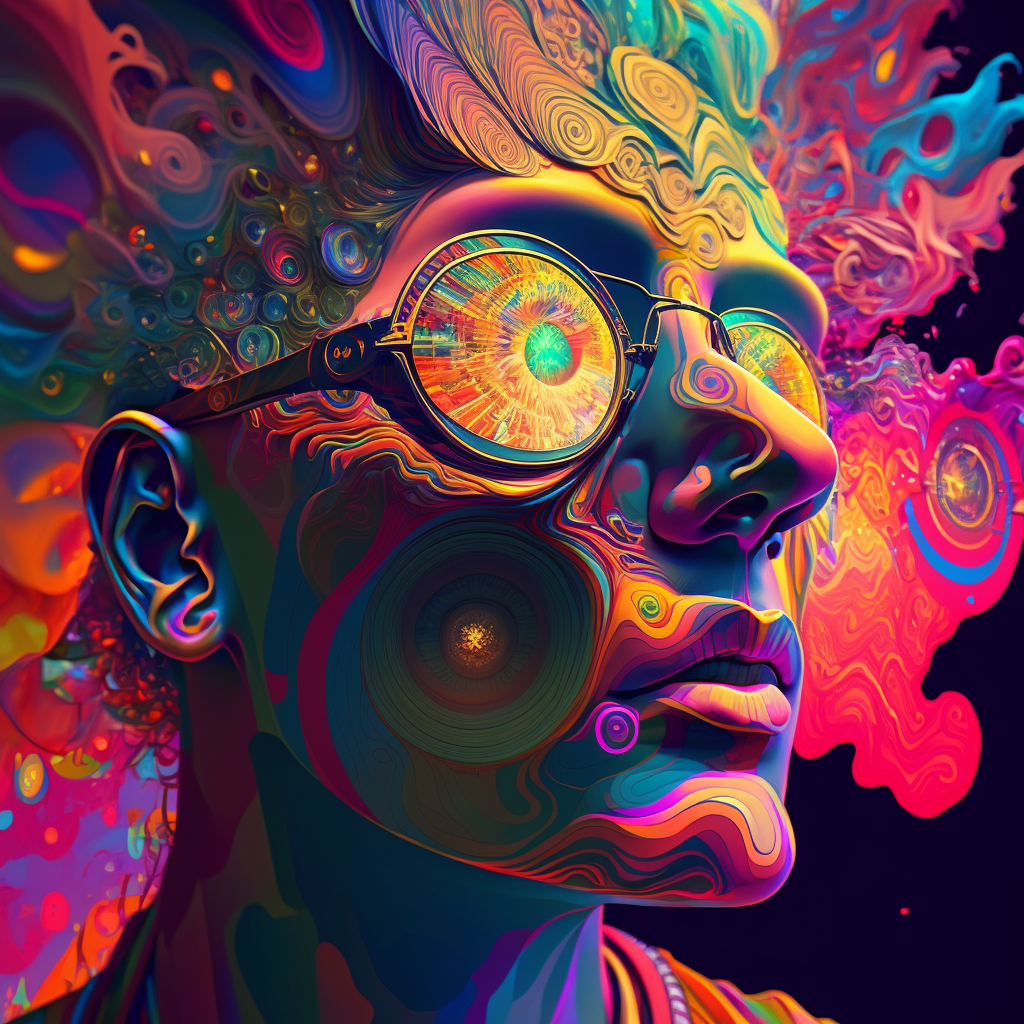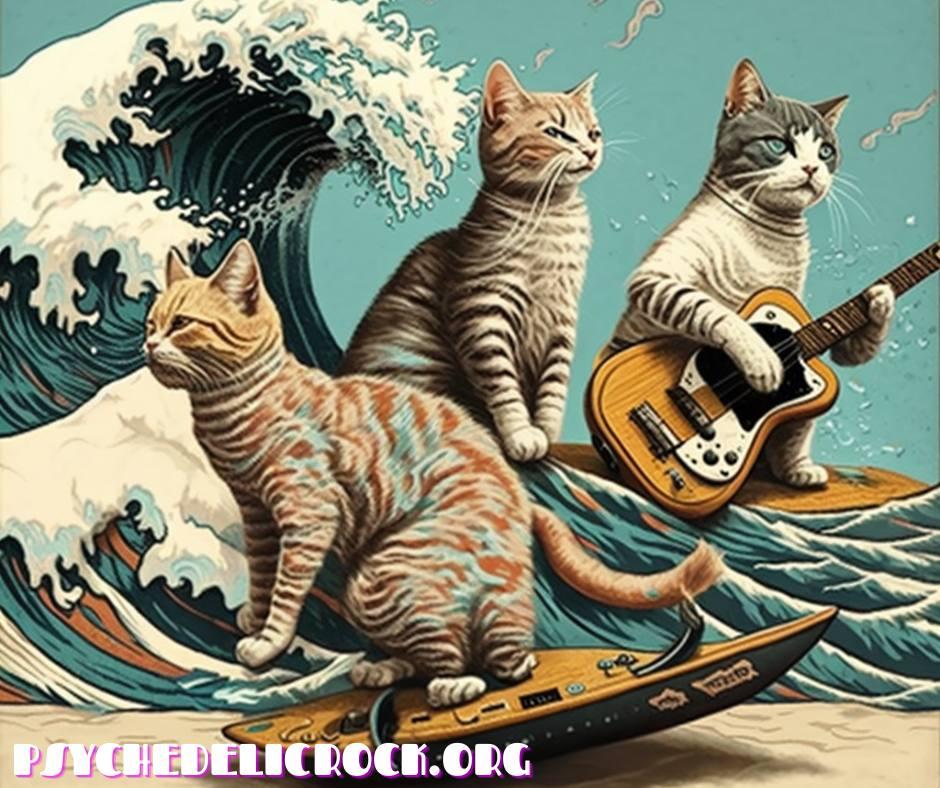
 The Evolution of Psychedelic Rock Festivals
The Evolution of Psychedelic Rock Festivals
Leave a comment
Psychedelic rock, a genre characterized by its surreal soundscapes, innovative use of electronic effects, and countercultural themes, has long held a significant place in the history of modern music. Emerging in the mid-1960s, this genre became a cornerstone of the broader counterculture movement, embodying the spirit of experimentation and rebellion. Among the various platforms that have celebrated and perpetuated psychedelic rock, festivals have played a pivotal role. These gatherings are not just about music; they are immersive experiences that blend art, culture, and community.
This article delves into the evolution of psychedelic rock festivals, tracing their origins, golden age, transformation, modern resurgence, and future prospects.
Origins of Psychedelic Rock Festivals
The origins of psychedelic rock festivals can be traced back to the vibrant and turbulent 1960s, a decade marked by significant social and political upheaval. The counterculture movement, characterized by its rejection of mainstream values and embrace of alternative lifestyles, provided the perfect breeding ground for psychedelic rock to flourish. This genre, with its roots in the earlier rock and roll and blues traditions, began to incorporate innovative studio techniques, exotic instruments, and an emphasis on extended improvisation, creating a sound that was both novel and captivating.
The rise of psychedelic rock was closely linked to the emergence of several iconic festivals. The Monterey Pop Festival in 1967 is often regarded as the first major rock festival. It featured legendary performances by artists like Jimi Hendrix, Janis Joplin, and The Who, and set the stage for future festivals by highlighting the communal and transformative potential of live music. Woodstock, held in 1969, became the epitome of the psychedelic rock festival, attracting over 400,000 attendees and featuring performances that have since become legendary. Similarly, the Isle of Wight Festival in the UK further cemented the festival format as a key element of the psychedelic rock experience.
The Golden Age of Psychedelic Rock Festivals
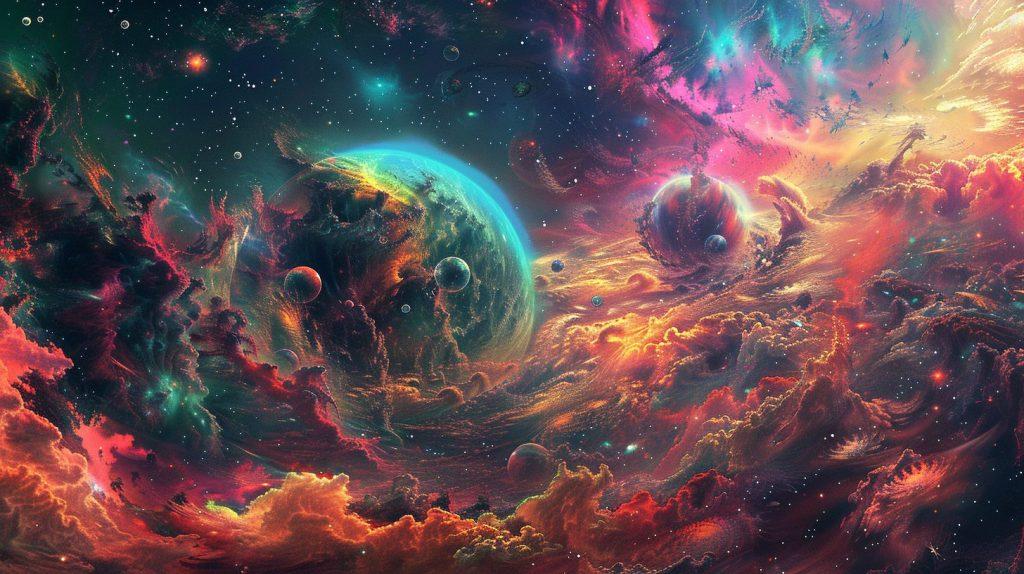
The 1970s marked the golden age of psychedelic rock festivals, with numerous events around the world drawing massive crowds and featuring stellar line-ups. During this decade, festivals became more than just concerts; they were cultural phenomena that encapsulated the ethos of the era.
Major Festivals of the 1970s
Glastonbury Festival, first held in 1970, quickly became one of the most iconic psychedelic rock festivals. Its blend of music, spirituality, and countercultural ideals resonated with the audience, creating a unique atmosphere that has endured to this day. Another significant event was the Atlanta International Pop Festival, which attracted huge crowds and featured performances by top psychedelic rock bands of the time.
Iconic Performances and Their Impact
The golden age of psychedelic rock festivals was marked by several iconic performances that left an indelible mark on the genre. Jimi Hendrix’s rendition of “The Star-Spangled Banner” at Woodstock, for example, became a defining moment not just for the festival, but for the entire counterculture movement. Similarly, performances by bands like Pink Floyd, The Grateful Dead, and Jefferson Airplane at various festivals helped to solidify their legendary status and influence the direction of psychedelic rock.
Cultural Significance
These festivals were more than just music events; they were cultural touchstones that reflected and shaped the broader societal changes of the time. They provided a space for the expression of alternative lifestyles, political activism, and a sense of community. The shared experience of these festivals helped to foster a sense of solidarity and collective identity among attendees, reinforcing the ideals of peace, love, and unity that were central to the counterculture movement.
Decline and Transformation (1980s – 1990s)
The 1980s and 1990s witnessed significant changes in the music industry and cultural landscape, leading to a decline in the prominence of psychedelic rock festivals. Several factors contributed to this shift, including changes in musical trends, commercialization, and the evolving preferences of audiences.
Changes in the Music Industry
The music industry underwent considerable transformation during the 1980s and 1990s, with the rise of new genres such as punk, new wave, and later, grunge and alternative rock. These psychedelic rock genres began to dominate the mainstream, pushing psychedelic rock to the fringes. Additionally, the increasing commercialization of music and the influence of major record labels led to a shift away from the experimental and countercultural roots of psychedelic rock.
Shift in Musical Trends
As musical tastes evolved, so too did the nature of festivals. The large-scale psychedelic rock festivals of the 1960s and 1970s gave way to more niche events that catered to specific sub-genres and audiences. The rise of electronic dance music (EDM) and rave culture in the late 1980s and early 1990s, for example, attracted many of the same audiences that had once flocked to psychedelic rock festivals.
Smaller, Niche Festivals Emerge
Despite the decline in mainstream popularity, psychedelic rock festivals did not disappear entirely. Instead, they transformed and adapted to the changing cultural landscape. Smaller, more intimate festivals began to emerge, focusing on preserving the spirit of psychedelic rock and its associated cultural elements. Events like the Terrastock festivals, which started in 1997, provided a platform for underground and experimental bands, keeping the flame of psychedelic rock alive.
Revival of Interest in the Late 1990s
Towards the end of the 1990s, there was a noticeable revival of interest in psychedelic rock, spurred in part by a renewed appreciation for its historical significance and its influence on contemporary music. This resurgence was also fueled by the rise of the internet and digital media, which made it easier for fans to discover and share music from different eras and genres.
The Modern Era of Psychedelic Rock Festivals
The turn of the millennium ushered in a renaissance for psychedelic rock festivals. This period saw the revitalization of old festivals and the creation of new ones, reflecting the enduring appeal of psychedelic rock and its ability to adapt to contemporary trends.
Renaissance in the 2000s
Coachella and Its Influence
The Coachella Valley Music and Arts Festival, first held in 1999, has become one of the most influential music festivals in the world. While not exclusively focused on psychedelic rock, Coachella has played a significant role in promoting the genre to new audiences. Its eclectic line-ups, which often feature both classic psychedelic rock bands and new acts influenced by the genre, have helped to keep psychedelic rock relevant in the modern music scene.
Burning Man and the Blend of Art and Music
Burning Man, held annually in the Nevada desert, is another festival that embodies the spirit of psychedelic rock. Although it is more of an art and cultural event than a traditional music festival, Burning Man’s emphasis on radical self-expression, community, and immersive experiences aligns closely with the values of the psychedelic rock movement. The festival’s diverse music offerings, including many psychedelic rock performances, contribute to its status as a modern-day manifestation of the counterculture ethos.
International Expansion
Psychedelic rock festivals have also expanded their reach internationally, with several notable events taking place outside the United States and the UK.
Boom Festival (Portugal)
The Boom Festival in Portugal is a prime example of this international expansion. Held biennially, Boom is known for its vibrant blend of music, art, and spirituality. The festival’s line-up includes a significant number of psychedelic rock acts, alongside electronic and world music artists. Boom’s emphasis on sustainability and holistic living also reflects the countercultural ideals that are central to psychedelic rock.
Ozora Festival (Hungary)
The Ozora Festival in Hungary is another prominent international psychedelic rock festival. Known for its immersive and transformative experiences, Ozora attracts a global audience of music and art enthusiasts. The festival features a diverse array of psychedelic rock bands, electronic music artists, and visual art installations, creating a unique and holistic festival experience.
Technology and Social Media’s Role in Promoting Festivals
The rise of technology and social media has had a profound impact on the promotion and accessibility of psychedelic rock festivals. Platforms like Facebook, Instagram, and YouTube have made it easier for festivals to reach a global audience and for fans to share their experiences. Live streaming of performances, online communities, and digital marketing have all contributed to the growing popularity and visibility of psychedelic rock festivals in the modern era.
Key Elements of Contemporary Psychedelic Rock Festivals
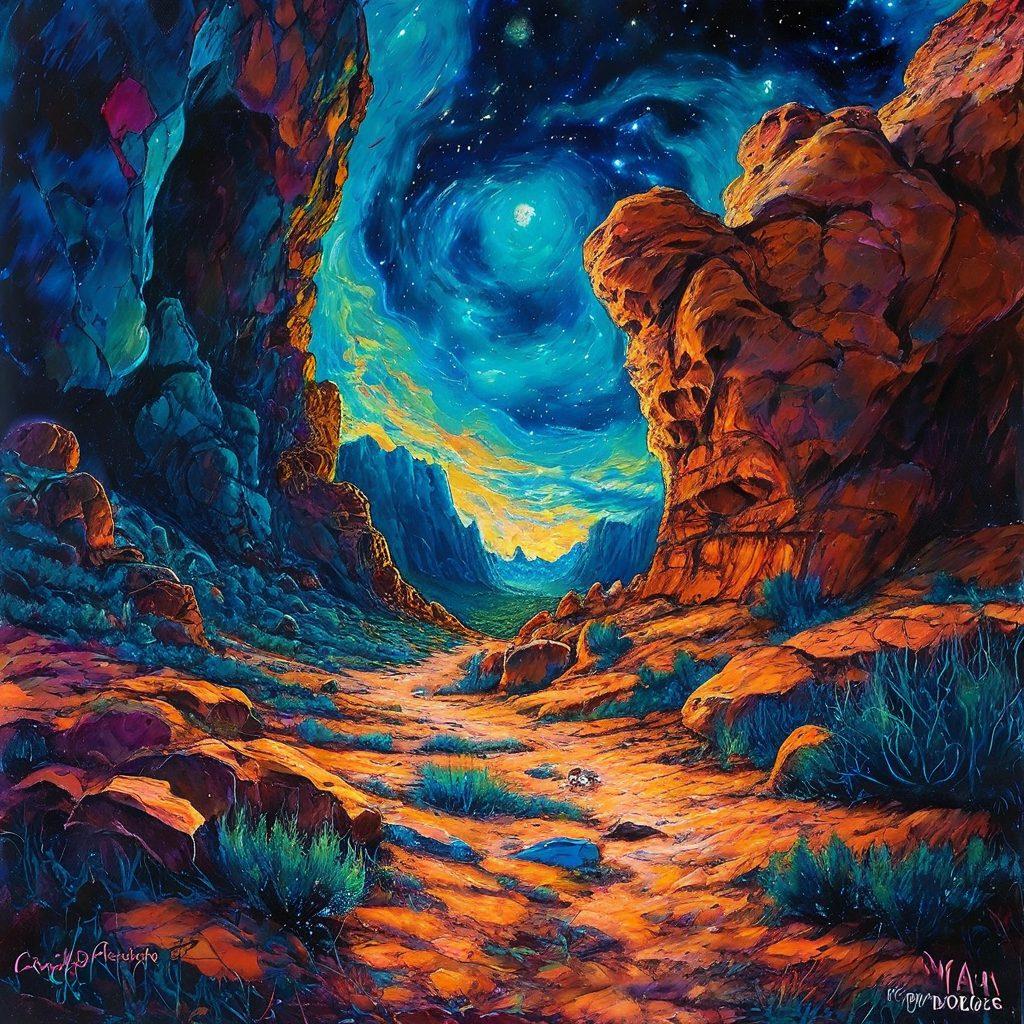
Contemporary psychedelic rock festivals are characterized by several key elements that set them apart from other music events. These elements contribute to the unique and immersive nature of these festivals, attracting a diverse and dedicated audience.
Diverse Line-Ups
One of the defining features of modern psychedelic rock festivals is their diverse line-ups. These festivals often feature a mix of classic psychedelic rock bands, contemporary acts, and artists from related genres such as electronic, folk, and world music. This diversity not only appeals to a broad audience but also reflects the genre’s inclusive and experimental spirit.
Visual Art and Multimedia Installations
Visual art and multimedia installations play a crucial role in the overall experience of psychedelic rock festivals. From elaborate stage designs and light shows to interactive art installations and psychedelic visuals, these elements create a sensory-rich environment that enhances the music and transports attendees into a different realm. This emphasis on visual art is a nod to the genre’s origins, where album covers and concert posters were often as iconic as the music itself.
Community and Environmental Consciousness
Community and environmental consciousness are central to the ethos of many contemporary psychedelic rock festivals. These events often promote sustainable practices, such as waste reduction, recycling, and the use of renewable energy sources. Additionally, the sense of community and collective experience is a key aspect of these festivals, with many attendees viewing them as opportunities to connect with like-minded individuals and create lasting bonds.
Fusion of Genres and Cultures
Modern psychedelic rock festivals often feature a fusion of genres and cultures, reflecting the genre’s global influence and its ability to transcend musical boundaries. This fusion is evident in the diverse array of artists and performances, as well as in the cultural elements that are incorporated into the festival experience, such as workshops, spiritual ceremonies, and international cuisine.
Impact on Music and Culture
Psychedelic rock festivals have had a lasting impact on both the music industry and broader cultural trends. Their influence can be seen in the continued popularity of psychedelic rock, the emergence of new artists, and the proliferation of psychedelic aesthetics in fashion, art, and lifestyle.
Influence on Modern Psychedelic Rock Bands
Psychedelic rock festivals continue to play a crucial role in shaping the careers of modern psychedelic rock bands. These festivals provide a platform for both established and emerging artists to reach new audiences and gain exposure. Bands like Tame Impala, King Gizzard & the Lizard Wizard, and The Flaming Lips have all gained significant recognition through their performances at psychedelic rock festivals, helping to keep the genre alive and evolving.
Festivals as a Platform for New Artists
In addition to showcasing established acts, psychedelic rock festivals are also important incubators for new talent. Many festivals feature dedicated stages or slots for up-and-coming artists, giving them the opportunity to perform alongside their idols and reach a wider audience. This support for emerging talent is crucial for the continued growth and innovation of the genre.
Broader Cultural Implications: Fashion, Art, and Lifestyle
The influence of psychedelic rock festivals extends beyond music, impacting fashion, art, and lifestyle trends. The vibrant and eclectic aesthetics associated with these festivals have inspired fashion designers, visual artists, and filmmakers. The DIY and countercultural ethos of psychedelic rock has also influenced lifestyle trends, such as the resurgence of interest in holistic living, alternative spirituality, and sustainable practices.
Challenges and Future Trends
Despite their enduring appeal, psychedelic rock festivals face several challenges and must continue to evolve to remain relevant in the future.
Commercialization and Its Effects
One of the primary challenges facing psychedelic rock festivals is the increasing commercialization of the music festival industry. As festivals grow in popularity and scale, there is a risk of losing the authentic and grassroots elements that define the psychedelic rock experience. Balancing commercial success with the preservation of the festival’s core values is a delicate but necessary task.
Sustainability and Environmental Concerns
Sustainability and environmental concerns are becoming increasingly important for festival organizers and attendees alike. Large-scale events can have significant environmental impacts, from waste generation to carbon emissions. Many festivals are taking steps to address these issues, implementing green initiatives such as zero-waste policies, carbon offset programs, and sustainable infrastructure. However, there is still much work to be done to ensure that these events are environmentally responsible.
The Role of Virtual Festivals Post-Pandemic
The COVID-19 pandemic had a profound impact on the live music industry, leading to the cancellation of many festivals and the rise of virtual events. While nothing can fully replicate the experience of attending a live festival, virtual festivals have offered a valuable alternative and expanded access to global audiences. As the world gradually returns to normal, the role of virtual festivals remains uncertain, but they are likely to continue to play a complementary role in the festival landscape.
Predictions for the Future of Psychedelic Rock Festivals
Looking ahead, psychedelic rock festivals are likely to continue evolving in response to changing cultural and technological trends. The integration of new technologies, such as virtual reality and augmented reality, could create even more immersive and interactive festival experiences. Additionally, the growing emphasis on sustainability and social responsibility is likely to shape the future of these events, ensuring that they remain aligned with the values of the psychedelic rock movement.
The Timeless Journey of Psychedelic Rock Festivals
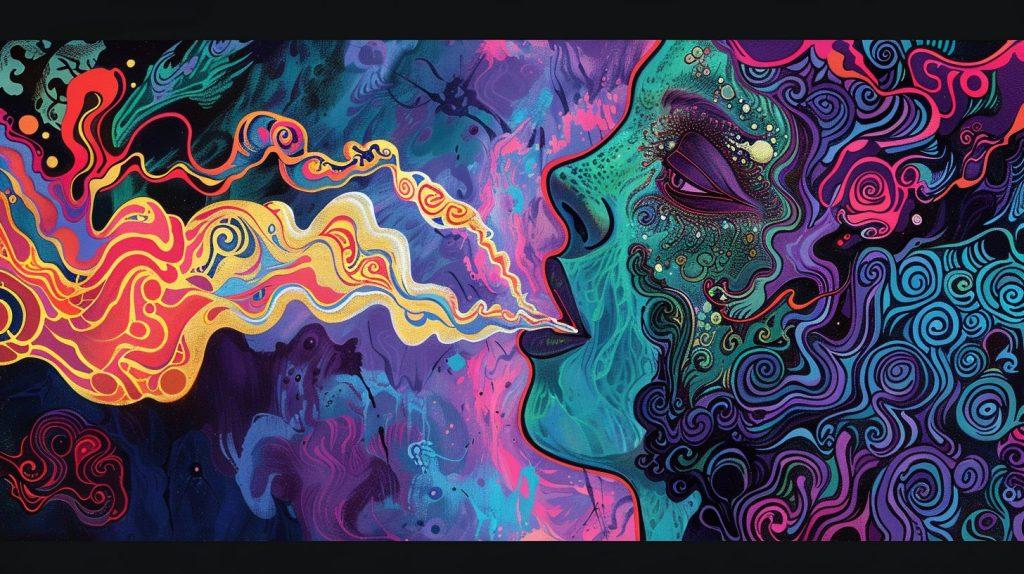
The evolution of psychedelic rock festivals is a testament to the enduring power and appeal of this unique genre. From their origins in the 1960s counterculture movement to their modern incarnations, these festivals have played a crucial role in shaping the music and cultural landscape. They have provided a platform for artistic expression, community building, and cultural exchange, leaving a lasting legacy that continues to inspire and captivate audiences around the world.
As psychedelic rock festivals continue to evolve, they will undoubtedly remain a vital and dynamic part of the music festival scene, carrying forward the spirit of experimentation and rebellion that defines psychedelic rock.
Categorised in: Psychedelic

